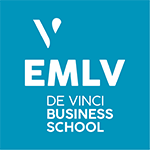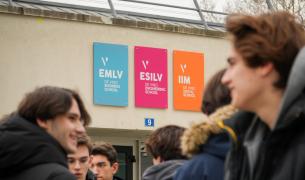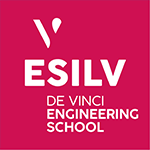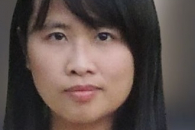L’Axe de recherche « Nouveaux Matériaux, Systèmes Intelligents et Entreprises innovantes » organise ses travaux autour de quatre sous-axes de recherche majeurs :
La recherche de matériaux intelligents fonctionnels représente un défi majeur dans de nombreux domaines tels que l’automobile, l’aéronautique et la biomédecine. Dans ce contexte, nos chercheurs collaborent en mettant en commun leur expertise pour concevoir des métamatériaux bio-inspirés architecturés et des smart matériaux, depuis la phase de conception numérique jusqu’à l’optimisation des propriétés structurales et/ou fonctionnelles, en passant par la fabrication et la caractérisation expérimentale. Les technologies développées réunissent des compétences dans plusieurs domaines, notamment la modélisation et simulation numérique multi-échelles, la simulation par éléments finis, l’Intelligence Artificielle, l’impression additive, le smart manufacturing et les méthodes expérimentales.
Dans le cadre de la transformation numérique, la sécurité digitale joue un rôle primordial. Au sein de l’Axe ce thème englobe la cybersécurité, la sécurité des réseaux, la résilience et la cryptographie, revêtant une importance significative avec une visibilité à la fois nationale et internationale. Le deuxième thème porte sur les systèmes intelligents, qui sont des composantes essentielles de la transformation numérique. La recherche au sein de l’Axe dans ce domaine se concentre sur les interactions entre l’humain et la machine, que ce soit du point de vue visuel, audio et/ou tactile, ainsi que sur la robotique, les objets connectés, l’IoT, la réalité virtuelle, et la e-santé, en lien avec les récentes avancées de l’intelligence artificielle.
La manière d’organiser l’innovation et l’impact des innovations sur nos vies sociales, comportementales et organisationnelles revêtent une importance cruciale tant sur le plan théorique que pratique. Nos membres excellent à l’échelle internationale dans la compréhension et l’exploration du développement de nouveaux produits et processus, ainsi que dans d’autres domaines tels que la gestion des innovations technologiques, l’encouragement du talent, l’optimisation de la chaîne d’approvisionnement, la gestion avancée des entrepôts et des opérations, la promotion de marques, et l’impact qu’ils apportent aux individus, aux groupes et aux pays grâce à ces innovations. Nous avons également acquis une expertise dans le financement, le recrutement et le développement d’entreprises innovantes (entrepreneuriat et création de nouvelles entreprises).
Nous sommes très intéressés par la recherche de stratégies qui favorisent, promeuvent et gèrent les innovations dans ce monde numérisé et hyper-connecté. Nos membres se consacrent à l’étude de la stratégie numérique et de la transformation numérique, les ethnographies des phénomènes numériques (par exemple, la ludification, la blockchain, la gestion algorithmique), la psychologie dans un contexte numérique (affects et émotions dans l’espace numérique), le marketing numérique, les interactions numériques et sociales (via les dispositifs portables, la robotique, l’apprentissage profond, les jeux, etc.), ainsi que par l’analyse des modèles économiques existants et de l’évolution des entreprises innovantes.
Parmi les projets interdisciplinaires, nous incluons :
L’équipe d’enseignants-chercheurs Nouveaux Matériaux, Systèmes Intelligents et Entreprises innovantes.
L’ensemble des travaux des enseignants-chercheurs Nouveaux Matériaux, Systèmes Intelligents et Entreprises innovantes.
Giudice, Manlio Del; Scuotto, Veronica; Ballestra, Luca Vincenzo; Pironti, Marco
Humanoid robot adoption and labour productivity: a perspective on ambidextrous product innovation routines Article de journal
Dans: International Journal Of Human Resource Management, vol. 33, no. 6, p. 1098-1124, 2022.
@article{del_giudice_1451,
title = {Humanoid robot adoption and labour productivity: a perspective on ambidextrous product innovation routines},
author = {Manlio Del Giudice and Veronica Scuotto and Luca Vincenzo Ballestra and Marco Pironti},
url = {https://www.tandfonline.com/doi/full/10.1080/09585192.2021.1897643},
year = {2022},
date = {2022-01-01},
journal = {International Journal Of Human Resource Management},
volume = {33},
number = {6},
pages = {1098-1124},
abstract = {The increasing presence of humanoid robot adoption has generated a change in explorative and exploitative routines. If the explorative routines provoke creativity and critical thinking which are delivered by humans, exploitative routines induce repetitive actions and mimic activities which are executed by humanoids. This has raised the need for a better balance between both routines involving an ambidextrous dynamic process. Here, product innovations play a relevant role in enhancing such balance and labour productivity. If, from the conceptual standpoint, this phenomenon has already been explored, there is still the need to empirically analyse it. We thus offer a meso-analysis of twenty-four countries located in Europe through the lens of the Service Robot Deployment (SRD) Model and the conceptual lens of organizational ambidexterity. By a regression methodology, the results show that humanoid robot adoption is still not affecting labour productivity which, by contrast, is positively and significantly connected with both radically new and marginally modified/unchanged production of innovative routines.
Our original contribution, which falls in the field of Human Resources Management and Artificial Intelligence, is that humanoids are not directly impacting labour productivity but indirectly through the generation of both new and marginally modified (or unchanged) routines. This situation persuades senior leaders to achieve a balance between exploitative and explorative product innovation routines.},
keywords = {},
pubstate = {published},
tppubtype = {article}
}
Lebon, Nicolas; Tapie, Laurent
Special Issue: Biomaterials Surface Integrity Ouvrage
MDPI, Crystals, 2022, ISBN: ISSN 2073-4352.
@book{lebon_2522,
title = {Special Issue: Biomaterials Surface Integrity},
author = {Nicolas Lebon and Laurent Tapie},
url = {https://www.mdpi.com/journal/crystals/special_issues/Biomaterials_surface_integrity},
issn = {ISSN 2073-4352},
year = {2022},
date = {2022-03-01},
volume = {12},
pages = {62},
publisher = {Crystals},
edition = {MDPI},
abstract = {Nowadays, prostheses or implantable medical devices intended for biomedical use are manufactured using various processes, such as machining, 3D printing, molding, and forging. These manufacturing processes generate a characteristic ?imprint? on the prosthesis
shape called surface integrity. Regarding the functional requirements of prostheses or implantable medical devices, the concept of surface integrity represents a new and preferential approach to characterizing the surface and sub-surface properties of biomaterials. Surface integrity analysis provides a comprehensive evaluation of the surface and its impact on the prosthesis' performance. However, the integrity of the surface, which must be suitable to meet expected clinical requirements (mechanical properties, optical properties, thermal properties, electrical properties, chemical properties), is influenced by the manufacturing process parameters used. To assess surface integrity, many characterization techniques are available depending on the observation scales; these include, but are not limited to, spectroscopy, optical imaging methods, nanoindentation, magnetic property measurements, roughness measurements, and X-Ray inspection. Surface integrity is a fundamental concept in engineering due to the invaluable source of information it provides about surface characteristics and its ability to meet clinical functional specifications.},
note = {Editorial : https://doi.org/10.3390/cryst12040438},
keywords = {},
pubstate = {published},
tppubtype = {book}
}
Mourgout, Adrien; Hattal, Amine; Gandolfi, Juliette; Hocini, Azziz; Mawussi, Bernardin; Lebon, Nicolas; Pirès, Rémy; Perriere, Loic; Dirras, Guy
Laser Powder Bed Fusion Processing Of Complex Concentrated Alloys For Bio-Implants Conférence
Powder Metallurgy World Congress 2022, European Powder Metallurgy Association (EPMA) Lyon, France, 2022.
@conference{mourgout_2490,
title = {Laser Powder Bed Fusion Processing Of Complex Concentrated Alloys For Bio-Implants},
author = {Adrien Mourgout and Amine Hattal and Juliette Gandolfi and Azziz Hocini and Bernardin Mawussi and Nicolas Lebon and Rémy Pirès and Loic Perriere and Guy Dirras},
url = {https://www.worldpm2022.com/},
year = {2022},
date = {2022-12-01},
booktitle = {Powder Metallurgy World Congress 2022},
pages = {1-8},
address = {Lyon, France},
organization = {European Powder Metallurgy Association (EPMA)},
abstract = {As the population ages in modern societies and the risks of bone diseases or bone accidents increase, there is a need for a new generation of materials with superior biocompatibility and good mechanical properties. This study combines two innovative metallurgical concepts to provide a material solution for the intended application. To this end, multicomponent and complex concentrated alloy (HEA/CCAs) based on TiNbZr-X (X = Mo, Ta) system is fabricated via additive manufacturing (AM), namely by Laser-Powder Bed Fusion (L-PBF) of gas-atomized pre-alloyed powder. After each stage of development by L-PBF through Taguchi's design of experiments, complete microstructure characterization and mechanical behavior of the resulting samples under different loading conditions are conducted. In addition, mechanical surface functionalization carried out by machining with metrological monitoring as a pre-step before a chemical functionalization for the suitability of materials developed for the intended application.},
keywords = {},
pubstate = {published},
tppubtype = {conference}
}
Guillaume, Zacharie; Richalet, Théo; Teyssier, Marc; Pauchet, Sylvain; Garcia, Jérémie; Roman, Benoit
Make-A-Morph: Exploring the design space of inflatable devices made from planar fabric Conférence
Fifth European Tangible Interaction Studio, Toulouse, France, 2022.
@conference{guillaume_2051,
title = {Make-A-Morph: Exploring the design space of inflatable devices made from planar fabric},
author = {Zacharie Guillaume and Théo Richalet and Marc Teyssier and Sylvain Pauchet and Jérémie Garcia and Benoit Roman},
url = {https://etis.lii.enac.fr/},
year = {2022},
date = {2022-11-01},
booktitle = {Fifth European Tangible Interaction Studio},
address = {Toulouse, France},
abstract = {Developing inflatable devices from planar fabric is a new versatile fabrication process that allows
the development of complex geometric shapes with a beneficial mass to robustness ratio. However,
designing and fabricating with this matter is complex, and the existing design primitives for shape
change can constrain designers' creativity. We present a pipeline that allows users and designers to
explore and compose with various shape-change primitives. To this extent, we rely on digital simulation
combined with a simple digital fabrication tool. This pipeline allows to explore and visualize deformation
and develop new application cases for shape-changing interfaces. We propose a workshop around
manipulating these tools to foster discussion between designers and researchers around the future of
shape-changing interface fabrication},
keywords = {},
pubstate = {published},
tppubtype = {conference}
}
Venkateswaran, Swaminath
Un robot bio-inspiré pour l'inspection des canalisations Conférence
Biomim'expo 2022, Paris, France, 2022.
@conference{venkateswaran_2279,
title = {Un robot bio-inspiré pour l'inspection des canalisations},
author = {Swaminath Venkateswaran},
url = {https://www.youtube.com/watch?v=vRXUEnpLvsk&t=776s},
year = {2022},
date = {2022-11-01},
booktitle = {Biomim'expo 2022},
address = {Paris, France},
abstract = {Les robots d'inspection de canalisations jouent un rôle important dans des industries telles que le nucléaire, la chimie et les eaux usées. Ils peuvent opérer avec précision dans un environnement irradié ou pollué, réduisant ainsi les risques pour les humains. Ce travail commence par l'étude du cas d'un robot d'inspection bio-inspiré rigide qui a été développé au LS2N, France pour AREVA. Des modèles statiques et dynamiques sont développés pour comprendre les forces de serrage et les couples des actionneurs du robot. Des validations expérimentales sont également effectuées sur le prototype pour interpréter les forces d'actionnement en temps réel. Pour améliorer sa mobilité, l'architecture du robot est rendue flexible par l'ajout d'un mécanisme de tenségrité. Deux types de mécanismes de tenségrité sont proposés et analysés avec des méthodes algébriques pour comprendre leurs limites d'inclinaison et pour connaître l'influence des paramètres de conception. Des expériences sont réalisées sur l'un des prototypes des mécanismes de tenségrité développés au LS2N avec deux types de trajectoire en positions horizontale et verticale. Ensuite, une optimisation est réalisée pour identifier les moteurs qui peuvent permettre du robot d'inspection de canalisation flexible de passer les coudes et les jonctions pour une plage donnée de diamètres de tuyaux. Une maquette numérique du robot flexible est réalisée dans un logiciel de CAO.},
keywords = {},
pubstate = {online},
tppubtype = {conference}
}
Serru, Théo; Nguyen, Nga; Batteux, Michel; Rauzy, Antoine; Blaize, Raphaël; Sagaspe, Laurent; Arbaretier, Emmanuel
Discussions About Model Based Security for Cyber Physical Systems Conférence
Congrès de maîtrise des risques et de sûreté de fonctionnement, Paris, France, 2022.
@conference{serru_1806,
title = {Discussions About Model Based Security for Cyber Physical Systems},
author = {Théo Serru and Nga Nguyen and Michel Batteux and Antoine Rauzy and Raphaël Blaize and Laurent Sagaspe and Emmanuel Arbaretier},
url = {https://www.imdr-lambdamu.eu/},
year = {2022},
date = {2022-10-01},
booktitle = {Congrès de maîtrise des risques et de sûreté de fonctionnement},
address = {Paris, France},
abstract = {Cyber-Physical Systems (CPSs) are intensively used in many different kinds of industrial
systems. Whether you are driving a recent car, taking the plane, having a smartphone or smart watch, you interact with CPSs. If we sometimes feel more comfortable or secure with them, these systems are very exposed to cyber-attacks. This is due to their highly interconnected nature and implies that they need to be carefully protected. Thus, one of their main challenges is to ensure their security.
Recent years have seen an increasing concern about the cybersecurity of CPSs and many methods have been developed to answer their challenges.
In this article, we focus on a recent philosophy of doing cybersecurity, inspired by Model
Based System Engineering (MBSE), called Model Based Security (MBS) or Model Driven Security [1]. This specialization of MBSE has been first applied to IT systems and is now a growing research field for CPSs as it helps to automatize cybersecurity assessments that are quickly intractable for engineers working on complex systems.
Despite the growing interest regarding MBS for CPSs, this method is poorly applied in
industry. Most of the works have been made in research labs and have not yet reached industrial application level. Furthermore, these works are relatively diverse and focus on different fields or different aspects of security. This variety is a chance and a problem because there is no consensus in the community on how to apply MBS to CPSs. Indeed, there is no established formal way to define systems (especially the interactions between the physical and cyber layer), threat models, scenarios of
attacks (qualitative analysis), potentiality evaluation (quantitative analysis), deployment phases, etc. [1] [2]. In addition, the abstraction is too high level to describe the complex interactions involved in CPSs or too low level to handle complexity [3].
The major contribution of this work is thus to summarize the actual strengths and weaknesses
of MBS for CPS. To do so, we propose to dig into some recent works and analyze them to understand the needs and missing theoretical background in this field. Then, with a clear overview of the issues about MBS, we will identify some solutions or trigger points that might help to make this type of
approach more attractive and exhaustive.
Finally, it will be possible to introduce an approach allowing MBS for CPS with the concern to cover some challenges of MBS for CPS with a simplistic, yet comprehensive, formalism.},
keywords = {},
pubstate = {published},
tppubtype = {conference}
}
Pignot, Edouard
Serious game design as control practice Conférence
Control-as-Practice workshop, ESSEC Business School Paris, France, 2022.
@conference{pignot_2145,
title = {Serious game design as control practice},
author = {Edouard Pignot},
url = {https://www.essec.edu/en/news/management-control-practice-workshop-temporal-perspectives/},
year = {2022},
date = {2022-10-01},
booktitle = {Control-as-Practice workshop},
address = {Paris, France},
organization = {ESSEC Business School},
abstract = {While the workplace literature has discussed playfulness as the nature of work as well as the designing of work, there is only limited research that focuses on how designers identify and disidentify with games over time. A Lacanian enquiry into the self-identification of serious game designers may prove particularly worthwhile, as designers first need to cope with their own fantasmatic attachment if they are to develop serious games that seduce others. A brief case study investigates this issue through the ethnographic observation of how lack, identification and fantasy are all dynamically intertwined in the context of the development of a serious medical game aimed at the elderly. The findings describe the process through which designers confront their gamified scenario, and how they overcome the resulting tension. The discussion reveals the traumatic origin of their playful fantasy, namely the affective underside of suffering and conflict. However, ethical designers resist, and eventually undo, gamification through ambivalent acting and ?crossing? the fantasy. Finally, the conclusion presents broader implications for serious game design and future avenues for empirical research in the Lacanian tradition.},
keywords = {},
pubstate = {published},
tppubtype = {conference}
}
Taleb, Ihab; Guérard, Guillaume; Fauberteau, Frédéric; Nguyen, Nga
A Holonic Smart Grid Model for Isolated Areas Conférence
European Conference on Machine Learning and Principles and Practice of Knowledge Discovery in Databases, PhD Forum, Grenoble, France, 2022.
@conference{taleb_1934,
title = {A Holonic Smart Grid Model for Isolated Areas},
author = {Ihab Taleb and Guillaume Guérard and Frédéric Fauberteau and Nga Nguyen},
url = {https://2022.ecmlpkdd.org/index.php/phd-forum/},
year = {2022},
date = {2022-09-01},
booktitle = {European Conference on Machine Learning and Principles and Practice of Knowledge Discovery in Databases, PhD Forum},
address = {Grenoble, France},
abstract = {Since the beginning of the $21$st century, smart grid models are gaining more and more importance as they play a major role in the demand side management and the flexible integration of renewable energy sources. Indeed, diverse architectures and models have been proposed for smart grids. In this paper, we propose a model composed of two parts, the first part is to optimize, on a weekly scale, thermal generation, and energy storage while prioritizing renewable energy sources to minimize global costs and global warming effects. The second part consists of, having optimized production and storage, the negotiation between neighboring holons on the same level using evolutionary game theory, combined with simulated annealing and Q-learning approaches to ensure a back and forth between the various levels.},
keywords = {},
pubstate = {published},
tppubtype = {conference}
}
Nguyen, Thuy; Bonamy, Daniel
Effect of atomic-scale solid discreetness in brittle fracture problem Conférence
11th European Solid Mechanics Conference, Galway, Ireland, 2022.
@conference{nguyen_1923,
title = {Effect of atomic-scale solid discreetness in brittle fracture problem},
author = {Thuy Nguyen and Daniel Bonamy},
url = {https://www.esmc2022.org/},
year = {2022},
date = {2022-07-01},
booktitle = {11th European Solid Mechanics Conference},
address = {Galway, Ireland},
abstract = {Material's resistance-to-failure is quantified by two dependent material constants (one is proportional to the square of the other): fracture energy and fracture toughness. Predicting their values from the solid structure at the atomistic scale remains insolved, even in the simplest situation of an ideal brittle fracture. By examining numerically crack growth in electrical analogues of brittle crystals with modulated geometries, we shed a new light on this question. We find that the value of fracture energy cannot be deduced from Griffith's free surface energy, as is generally believed [1]. Rather, it finds its origin in the matching between the continuum-level scale displacement field of solid mechanics and the discrete nature of solids at the atomic scale. By making use of the generic asymptotic form, referred to as Williams's series expansion [2], taken by the displacement field near the crack tip, we find an analytical solution for this matching, and subsequently a way to predict quantitativly fracture toughness from the atomistic parameters [3]. We will discuss how to extend the analysis to genuine elastic (plane stress) crack problems and predict fracture toughness in 2D and 3D materials. This work sheds new perspectives on how resistance-to-faillure is selected; and hence, how it can be improved. As such, it may catalyze novel research toward new architectured materials of superior strcutural performance via microstructure patterning : tougher, more durable, lighter and/or combining other functionalities.},
keywords = {},
pubstate = {published},
tppubtype = {conference}
}
Navazhylava, Kseniya; Pillet, Jean-Charles; Islam, Gazi; Barros, Marcos
Digital ritual infrastructure Conférence
38th EGOS Colloquium, Vienna, Austria, 2022.
@conference{navazhylava_2212,
title = {Digital ritual infrastructure},
author = {Kseniya Navazhylava and Jean-Charles Pillet and Gazi Islam and Marcos Barros},
url = {https://www.egos.org/2022_Vienna/General-Theme},
year = {2022},
date = {2022-07-01},
booktitle = {38th EGOS Colloquium},
address = {Vienna, Austria},
abstract = {As rituals move into the digital sphere, the technical design of what we call digital ritual infrastructures may affect unplanned moments of social externalities. We empirically ground the notion of digital ritual infrastructure through a study of WellTech, an association of digital start-up organizations whose focus is designing wellbeing-related workplace technologies. To understand how digital rituals are shaped by these technologies, we draw upon interviews, archival and observational data. Our findings suggest that digital ritual infrastructure supports but also rescales and revalues rituals. In this process, technology-mediated ritualized action is directed towards designed function, potentially foreclosing on opportunities for socially creative or unexpected effects. We discuss the implications of our findings for understanding ritual in digitalized workplaces.},
keywords = {},
pubstate = {published},
tppubtype = {conference}
}
Lefevre, Adrien; Xiao, Xiao; Duhart, Clément
The Interactive Musical Score: An Electronic Score To Hear The Notes From A Paper Score Conférence
New Interfaces for Musical Expression, Aotearoa, New Zealand, 2022.
@conference{lefevre_1830,
title = {The Interactive Musical Score: An Electronic Score To Hear The Notes From A Paper Score},
author = {Adrien Lefevre and Xiao Xiao and Clément Duhart},
url = {https://nime2022.org/program.html},
year = {2022},
date = {2022-06-01},
booktitle = {New Interfaces for Musical Expression},
address = {Aotearoa, New Zealand},
abstract = {The Interactive Score is a novel instrumental device for children's solfege learning. Paper scores are overlaid onto a staff drawn with conductive ink and connected to an Adafruit musical box. Pressing a note in the score triggers its sound, and running fingers over the notes plays a melody.
Learning to read music from the score is an essential part of Western classical music training. Traditionally, children learn the different music notes by singing or playing notes on an instrument, guided by a teacher. We envision a way for children to learn the correspondence between notation and sound by directly touching the score.
The Interactive Score is effortless to use and allows children to make discoveries on their own. The correspondence between the visual, the tactile , and the sound can aid in learning.},
keywords = {},
pubstate = {published},
tppubtype = {conference}
}
Pignot, Edouard; Thompson, Mark
Engaging with emotions in sociomaterial practices: An affect-based model of agency Conférence
Organization, Artefacts, Practices Workshop, San Francisco, United States, 2022.
@conference{pignot_2146,
title = {Engaging with emotions in sociomaterial practices: An affect-based model of agency},
author = {Edouard Pignot and Mark Thompson},
url = {https://workshopoap.dauphine.fr},
year = {2022},
date = {2022-06-01},
booktitle = {Organization, Artefacts, Practices Workshop},
address = {San Francisco, United States},
abstract = {We make the case for broadening our understanding of the interaction between social and material dimensions of organizing, in order to include a more explicit engagement with emotions, which we deepen to incorporate an account of affect. We build on, and extend, some key contributions on affect theory to date within and outside IS literature, before introducing several concepts from management studies that enable a materially-informed engagement with the circulation of affect, leading to an arguably richer and more granular understanding of the relational nature of IS agency. We then apply these concepts in a short empirical vignette, in which affect plays a central role in explaining why some technologies ?make it?, whilst others do not. We conclude by discussing ontological, epistemological and practical opportunities for further research.},
keywords = {},
pubstate = {published},
tppubtype = {conference}
}
Navazhylava, Kseniya; Peticca-Harris, Amanda
Work-Family Research Network 2022, New-York, USA, 2022.
@conference{navazhylava_2211,
title = {YouTube's Yoga with Adriene as a somametamnemata: Exploring experiences of self-care and wellness in times of crisis},
author = {Kseniya Navazhylava and Amanda Peticca-Harris},
url = {https://wfrn.org/wfrn-2022-conference/},
year = {2022},
date = {2022-06-01},
booktitle = {Work-Family Research Network 2022},
address = {New-York, USA},
abstract = {Drawing on the Foucauldian technologies of the self, this study explores how individuals re-envision practices of wellbeing outside of traditional organizational contexts during extreme events. Based on a thematic analysis of 7,234 comments posted on the Yoga with Adriene YouTube channel in 2020, this study unpacks a technologically mediated practice of self-care, which we conceptualize as somametamnemata. Our findings illustrate three entangled aspects of somametamnemata relating to yoga, a form of bodywork: Caring about self through practicing yoga online; caring about self and others through sharing about yoga in written comments; and caring about self and others through responding to shared verbalizations of yoga. This study distinguishes somametamnemata from known practices of self-care, advancing existing literature on technologies of self by overcoming the dichotomy between negative views of ill-being and positive views of wellbeing. By situating the potentiality of individual wellbeing within ill-being, we shift debates and discussions of ?corporate wellness? beyond organizational boundaries.},
keywords = {},
pubstate = {published},
tppubtype = {conference}
}
Kallel, Achraf; Dekran, Joyce; Abdallah, Abir Ben; Ballut, Sebastien
Temperature Evolution of PLA during Filaments FFF process Conférence
3D Printing and Additive Manufacturing 2022, Copenhagen, Denmark, 2022.
@conference{kallel_2222,
title = {Temperature Evolution of PLA during Filaments FFF process},
author = {Achraf Kallel and Joyce Dekran and Abir Ben Abdallah and Sebastien Ballut},
url = {https://www.thescientistt.com/3dprinting/2022/index.php#important_dates},
year = {2022},
date = {2022-06-01},
booktitle = {3D Printing and Additive Manufacturing 2022},
address = {Copenhagen, Denmark},
keywords = {},
pubstate = {published},
tppubtype = {conference}
}
Nicolae, Madalena; Martinez-Missir, Valentin; Teyssier, Marc
The Rise of Organic Soft Robotics : Strategies for Fabrication Conférence
ACM CHI 2022 Conference on Human Factors in Computing Systems, New Orleans, USA, 2022.
@conference{nicolae_1812,
title = {The Rise of Organic Soft Robotics : Strategies for Fabrication},
author = {Madalena Nicolae and Valentin Martinez-Missir and Marc Teyssier},
editor = {ACM},
url = {https://programs.sigchi.org/chi/2022},
year = {2022},
date = {2022-05-01},
booktitle = {ACM CHI 2022 Conference on Human Factors in Computing Systems},
address = {New Orleans, USA},
edition = {2022},
abstract = {Soft Robotics rapidly emerged as an area of interest in Human-Computer Interaction (HCI). Simple DIY fabrication processes and platforms were re-adapted from traditional digital fabrication tools, resulting in making soft materials-based prototyping accessible to the design and maker community.
There is a growing interest in the use of bio-based and bio-degradable materials in design and prototyping, creating discussions around sustainable design practices as new motor of interdisciplinary exchange. These materials are abundant in Nature, have properties extensively explored in bio-engineering, and are potent in driving sustainability.
However, soft robotics and shape-changing interfaces are not yet developed using these new materials alternatives.
In this context, we highlight potential materials and advocate for their democratized use in soft robotics and HCI. More precisely, we propose an empiric overview of the main challenges in prototyping with bio-based and/or bio-degradable materials, pointing therefore how fabrication processes and tools need to be adjusted once again.},
keywords = {},
pubstate = {published},
tppubtype = {conference}
}
Pelet, Jean-Éric; Taieb, Basma
LES DETERMINANTS DE L'ADOPTION DU LIVE SHOPPING : L'EXPERTISE DE L'ANIMATEUR ET L'EXPERIENCE DE FLOW Conférence
Congrès International de l'AFM, Tunis, Tunisie, 2022.
@conference{pelet_2058,
title = {LES DETERMINANTS DE L'ADOPTION DU LIVE SHOPPING : L'EXPERTISE DE L'ANIMATEUR ET L'EXPERIENCE DE FLOW},
author = {Jean-Éric Pelet and Basma Taieb},
url = {https://www.afm-marketing.org/38%C3%A8mecongr%C3%A8sinternationaldelafmtunis2022.html},
year = {2022},
date = {2022-05-01},
booktitle = {Congrès International de l'AFM},
address = {Tunis, Tunisie},
abstract = {L'article examine dans quelle mesure le live shopping constitue un moyen efficace de vendre sur Internet. Au travers du cadre SOR, il examine comment cibler efficacement les utilisateurs. Une étude exploratoire menée auprès de 27 répondants, conduite suite au replay (direct enregistré) identifie les facteurs tels que le côté pratique et dynamique ainsi que l'aspect rassurant, agréable et confortable d'une session de live shopping. La synchronicité de l'animateur/-trice renforce la perception de flow. L'expérience de l'utilisateur s'en voit accrue, entraînant des intentions de participer et d'acheter supérieures. Une étude confirmatoire en ligne conduite auprès de 51 répondants ayant déjà participé à un live shopping, permet de voir le rôle joué par l'animateur/-trice. L'expérience de flow a une influence positive sur les intentions de participer et d'acheter. Des effets alignés sur les seules références qui existent sur le marché : chinoises. Conclusion, discussion, limites et voies futures de recherche découlent des résultats.},
keywords = {},
pubstate = {published},
tppubtype = {conference}
}
Pelet, Jean-Éric; Taieb, Basma
Atténuer les impacts environnementaux de la chaîne d'approvisionnement du vin grâce aux vélos cargos Conférence
Association Information et Management - 27ème édition, Carry-le-Rouet, France, 2022.
@conference{pelet_2059,
title = {Atténuer les impacts environnementaux de la chaîne d'approvisionnement du vin grâce aux vélos cargos},
author = {Jean-Éric Pelet and Basma Taieb},
url = {https://aim2022.sciencesconf.org/data/pages/Programme_livret_conference_AIM_2022_Final.pdf},
year = {2022},
date = {2022-05-01},
booktitle = {Association Information et Management - 27ème édition},
address = {Carry-le-Rouet, France},
keywords = {},
pubstate = {online},
tppubtype = {conference}
}
Montiel, Antoine; Sargueil, Paul; Nguyen, Thuy; Rountree, Cindy; Geertsen, Valérie; Guenoun, Patrick; Bonamy, Daniel
Mechanical & fracture behaviour of microlattice metamaterial with disordered architecture Conférence
Mécanique des Matériaux Architecturés, MacaMat Aussois, France, 2022.
@conference{montiel_1775,
title = {Mechanical & fracture behaviour of microlattice metamaterial with disordered architecture},
author = {Antoine Montiel and Paul Sargueil and Thuy Nguyen and Cindy Rountree and Valérie Geertsen and Patrick Guenoun and Daniel Bonamy},
url = {https://aussois2022.sciencesconf.org/},
year = {2022},
date = {2022-01-01},
booktitle = {Mécanique des Matériaux Architecturés},
address = {Aussois, France},
organization = {MacaMat},
keywords = {},
pubstate = {published},
tppubtype = {conference}
}
Du, Jingshu
Strategic Decision-Making Accuracy under Uncertainty Conférence
Academy of Management Journal Paper Development Workshop, Academy of Management Journal Madrid, IE University, Spain, 2022.
@conference{du_3317,
title = {Strategic Decision-Making Accuracy under Uncertainty},
author = {Jingshu Du},
year = {2022},
date = {2022-01-01},
booktitle = {Academy of Management Journal Paper Development Workshop},
address = {Madrid, IE University, Spain},
organization = {Academy of Management Journal},
keywords = {},
pubstate = {accepted},
tppubtype = {conference}
}
Dobinson, Rhett; Teyssier, Marc; Steimle, Jürgen; Fruchard, Bruno
MicroPress: Detecting Pressure and Hover Distance in Thumb-to-Finger Interactions Proceedings Article
Dans: SIGGRAPH, (Ed.): Spatial User Interaction, p. 1-10, SIGGRAPH, online, 2022, ISBN: 978-1-4503-9948-7.
@inproceedings{dobinson_2052,
title = {MicroPress: Detecting Pressure and Hover Distance in Thumb-to-Finger Interactions},
author = {Rhett Dobinson and Marc Teyssier and Jürgen Steimle and Bruno Fruchard},
editor = {SIGGRAPH},
url = {https://dl.acm.org/doi/10.1145/3565970.3567698},
issn = {978-1-4503-9948-7},
year = {2022},
date = {2022-12-01},
booktitle = {Spatial User Interaction},
volume = {4},
pages = {1-10},
publisher = {SIGGRAPH},
address = {online},
abstract = {Thumb-to-finger interactions leverage the thumb for precise, eyes-free input with high sensory bandwidth. While previous research explored gestures based on touch contact and finger movement on the skin, interactions leveraging depth such as pressure and hovering input are still underinvestigated. We present MicroPress, a proof-of-concept device that can detect both, precise thumb pressure applied on the skin and hover distance between the thumb and the index finger. We rely on a wearable IMU sensor array and a bi-directional RNN deep learning approach to enable fine-grained control while preserving the natural tactile feedback and touch of the skin. We demonstrate MicroPress' efficacy with two interactive scenarios that pose challenges for real-time input and we validate its design with a study involving eight participants. With short per user calibration steps, MicroPress is capable of predicting hover distance with 0.57mm accuracy, and on-skin pressure with 6.71% normalized pressure error at 6 locations on the index finger.},
keywords = {},
pubstate = {published},
tppubtype = {inproceedings}
}
Venkateswaran, Swaminath; Chablat, Damien Charles
Stability analysis of tensegrity mechanism coupled with a bio- inspired piping inspection robot Proceedings Article
Dans: 47th Congress of the society of Biomechanics, Monastir, Tunisia, Monastir, Tunisia, 2022, ISBN: 1025-5842.
@inproceedings{venkateswaran_1843,
title = {Stability analysis of tensegrity mechanism coupled with a bio- inspired piping inspection robot},
author = {Swaminath Venkateswaran and Damien Charles Chablat},
url = {https://www.tandfonline.com/doi/epdf/10.1080/10255842.2022.2116885?needAccess=true&role=button},
issn = {1025-5842},
year = {2022},
date = {2022-10-01},
booktitle = {47th Congress of the society of Biomechanics, Monastir, Tunisia},
address = {Monastir, Tunisia},
abstract = {Piping inspection robots play an essential role for industries as they can reduce human effort and pose a lesser risk to their lives. Generally, the locomotion techniques of these robots can be classified into mechanical and bioinspired. By using slot-follower leg mechanisms, DC-motors, and control units, a rigid caterpillar type inspection robot was designed and developed at LS2N, France. This rigid prototype helped in identifying the static forces required to
accomplish good contact forces with the pipeline walls. In order to work inside curvatures, a tensegrity mechanism that uses three tension springs and a passive universal joint was introduced between each module of this robot. The optimal parameters of the robot assembly were identified by considering a preload of the cables, which ensured the stability of the entire robot. However, under static conditions, there exist some forces on the robot,
especially on the tensegrity mechanism when one end of the leg mechanism is clamped with the pipeline walls. These forces are dominant when the orientation of the pipeline is horizontal. The objective of this article is to understand the effect of the stiffness of
the spring on the static stability of the tensegrity mechanism under the self-weight of the robot assembly.},
keywords = {},
pubstate = {published},
tppubtype = {inproceedings}
}
Koelle, Marion; Nicolae, Madalena; Nittala, Aditya Shekhar; Teyssier, Marc; Steimle, Jürgen
Prototyping Soft Devices with Interactive Bioplastics Proceedings Article
Dans: ACM, (Ed.): 35th Annual ACM Symposium on User Interface Software and Technology, Bend OR, USA, 2022, ISBN: 978-1-4503-9320-1.
@inproceedings{koelle_2050,
title = {Prototyping Soft Devices with Interactive Bioplastics},
author = {Marion Koelle and Madalena Nicolae and Aditya Shekhar Nittala and Marc Teyssier and Jürgen Steimle},
editor = {ACM},
url = {https://dl.acm.org/doi/abs/10.1145/3526113.3545623},
issn = {978-1-4503-9320-1},
year = {2022},
date = {2022-10-01},
booktitle = {35th Annual ACM Symposium on User Interface Software and Technology},
address = {Bend OR, USA},
abstract = {Designers and makers are increasingly interested in leveraging bio-based and bio-degradable ?do-it-yourself' (DIY) materials for sustainable prototyping. Their self-produced bioplastics possess compelling properties such as self-adhesion but have so far not been functionalized to create soft interactive devices, due to a lack of DIY techniques for the fabrication of functional electronic circuits and sensors. In this paper, we contribute a DIY approach for creating Interactive Bioplastics that is accessible to a wide audience, making use of easy-to-obtain bio-based raw materials and familiar tools. We present three types of conductive bioplastic materials and their formulation: sheets, pastes and foams. Our materials enable additive and subtractive fabrication of soft circuits and sensors. Furthermore, we demonstrate how these materials can substitute conventional prototyping materials, be combined with off-the-shelf materials.},
note = {Best Paper and Best Demo},
keywords = {},
pubstate = {published},
tppubtype = {inproceedings}
}
Guerich, Mohamed; Assaf, Samir
Damping optimal design of sandwich beams partially covered with damping patches Proceedings Article
Dans: Proceedings of ISMA2022 including USD2022, Leuven, belgium, 2022, ISBN: 978-90-828931-5-1.
@inproceedings{guerich_2372,
title = {Damping optimal design of sandwich beams partially covered with damping patches},
author = {Mohamed Guerich and Samir Assaf},
url = {https://www.isma-isaac.be/isma2022},
issn = {978-90-828931-5-1},
year = {2022},
date = {2022-09-01},
booktitle = {Proceedings of ISMA2022 including USD2022},
address = {Leuven, belgium},
abstract = {The application of viscoelastic materials in the form of constrained layers in mechanical structures is an
efficient and cost-effective technique for solving noise and vibration problems. This technique requires
design tool to select the best location, type and thickness of the damping treatment. This paper presents a
finite element model for the vibration of beams partially or fully covered with a constrained viscoelastic
damping material. The model is based on Bernoulli-Euler theory for the faces and Timoshenko beam theory
for the core. The sandwich beam finite element is compatible with the conventional C1 finite element for
homogenous beams. To validate the proposed model, several free vibration analyses of fully or partially
covered beams, with different locations of the damping patches and different percent coverage are studied.
The results show that the proposed approach can be used as an effective tool to study the influence of the
location and treatment size on the natural frequencies and the associated modal loss factors.},
keywords = {},
pubstate = {published},
tppubtype = {inproceedings}
}
Du, Jingshu
Strategic Decision-Making Accuracy under Uncertainty Proceedings Article
Dans: Strategic Management Society, Strategic Management Society London, The United Kingdom, 2022.
@inproceedings{du_3316,
title = {Strategic Decision-Making Accuracy under Uncertainty},
author = {Jingshu Du},
url = {https://www.strategicmanagement.net/previous-conference/sms-42nd-annual-conference/},
year = {2022},
date = {2022-09-01},
booktitle = {Strategic Management Society},
address = {London, The United Kingdom},
organization = {Strategic Management Society},
note = {September 17-20, 2022},
keywords = {},
pubstate = {published},
tppubtype = {inproceedings}
}
Kleinberger, Rébecca; Singh, Nikhil; Xiao, Xiao; Troyer, Akito Van
Voice at NIME: a Taxonomy of New Interfaces for Vocal Musical Expression Proceedings Article
Dans: Proceedings of the International Conference on New Interfaces for Musical Expression, Aotearoa, New Zealand, 2022.
@inproceedings{kleinberger_1829,
title = {Voice at NIME: a Taxonomy of New Interfaces for Vocal Musical Expression},
author = {Rébecca Kleinberger and Nikhil Singh and Xiao Xiao and Akito Van Troyer},
url = {https://nime.pubpub.org/pub/180al5zt/},
year = {2022},
date = {2022-06-01},
booktitle = {Proceedings of the International Conference on New Interfaces for Musical Expression},
address = {Aotearoa, New Zealand},
abstract = {We present a systematic review of voice-centered NIME publications from the past two decades. Musical expression has been a key driver of innovation in voice-based technologies, from traditional architectures that amplify singing to cutting-edge research in vocal synthesis. NIME conference has emerged as a prime venue for innovative vocal interfaces. However, there hasn't been a systematic analysis of all voice-related work or an effort to characterize their features. Analyzing trends in Vocal NIMEs can help the community better understand common interests, identify uncharted territories, and explore directions for future research. We identified a corpus of 98 papers about Vocal NIMEs from 2001 to 2021, which we analyzed in 3 ways. First, we automatically extracted latent themes and possible categories using natural language processing. Taking inspiration from concepts surfaced through this process, we then defined several core dimensions with associated descriptors of Vocal NIMEs and assigned each paper relevant descriptors under each dimension. Finally, we defined a classification system, which we then used to uniquely and more precisely situate each paper on a map, taking into account the overall goals of each work. Based on our analyses, we present trends and challenges, including questions of gender and diversity in our community, and reflect on opportunities for future work.},
keywords = {},
pubstate = {published},
tppubtype = {inproceedings}
}
Guérard, Guillaume; Taleb, Ihab; Fauberteau, Frédéric; Nguyen, Nga
Modélisation Multi-Agent pour les Réseaux Energétique Insulaires Proceedings Article
Dans: Journées Francophones sur les Systèmes Multi-Agents, Saint-Etienne, France, 2022.
@inproceedings{guerard_1831,
title = {Modélisation Multi-Agent pour les Réseaux Energétique Insulaires},
author = {Guillaume Guérard and Ihab Taleb and Frédéric Fauberteau and Nga Nguyen},
url = {https://ci.mines-stetienne.fr/pfia2022/conferences/jfsma/},
year = {2022},
date = {2022-06-01},
booktitle = {Journées Francophones sur les Systèmes Multi-Agents},
address = {Saint-Etienne, France},
keywords = {},
pubstate = {published},
tppubtype = {inproceedings}
}
Yuan, Zhe; Simon, Hervé
Optimal models for autonomous trucks and drones resupply for last-mile delivery in urban areas Proceedings Article
Dans: 10th IFAC Conference on Manufacturing Modelling, Management and Control., Nantes, France, 2022.
@inproceedings{yuan_1857,
title = {Optimal models for autonomous trucks and drones resupply for last-mile delivery in urban areas},
author = {Zhe Yuan and Hervé Simon},
url = {https://www.ifac-control.org/conferences/manufacturing-modelling-management-and-control-10th-mim-2022tm},
year = {2022},
date = {2022-06-01},
booktitle = {10th IFAC Conference on Manufacturing Modelling, Management and Control.},
address = {Nantes, France},
keywords = {},
pubstate = {published},
tppubtype = {inproceedings}
}
Lebon, Nicolas; Tapie, Laurent
Surface Integrity of Pre-sintered Ceramics and Composites Used for Dental Prostheses After CAD/CAM Abrasive Milling Proceedings Article
Dans: ELSEVIER, (Ed.): 6th CIRP Conference on Surface Integrity, p. 252-257, ScienceDirect, Lyon, France, 2022, ISBN: ISSN 2212-8271.
@inproceedings{lebon_2495,
title = {Surface Integrity of Pre-sintered Ceramics and Composites Used for Dental Prostheses After CAD/CAM Abrasive Milling},
author = {Nicolas Lebon and Laurent Tapie},
editor = {ELSEVIER},
url = {https://www.sciencedirect.com/science/article/pii/S2212827122005200?via%3Dihub},
issn = {ISSN 2212-8271},
year = {2022},
date = {2022-06-01},
booktitle = {6th CIRP Conference on Surface Integrity},
volume = {108},
number = {8},
pages = {252-257},
publisher = {ScienceDirect},
address = {Lyon, France},
edition = {2022},
abstract = {All-ceramic fixed partial dental restorations are milled by CAD/CAM process. The significant challenges for such prostheses manufacturing are respecting functional and aesthetic requirements. Specific surface integrity (SI) might be manufactured in different anatomical and assembly prosthesis areas. Aesthetics, biological and mechanical responses require a low surface roughness. Contrariwise, the surface to be bonded needs to be sufficiently rough. The CAD/CAM process's influence on prosthesis SI is not investigated in the industrial and scientific restorative dentistry community. This paper evaluates the influence of tools, biomaterials, and milling parameters on SI, especially the roughness, leading to topological decomposition of the prosthesis shape.},
keywords = {},
pubstate = {published},
tppubtype = {inproceedings}
}
Ogorodnikov, Yuri; Rudakov, Roman; KHACHAI, Daniil; Khachay, Michael
A Problem-Specific Branch-and-Bound Algorithm for the Protected Shortest Simple Path Problem with Must-Pass Nodes Proceedings Article
Dans: IFAC PAPERS ONLINE, Nantes, FRANCE, 2022, ISBN: 2405-8963.
@inproceedings{ogorodnikov_3300,
title = {A Problem-Specific Branch-and-Bound Algorithm for the Protected Shortest Simple Path Problem with Must-Pass Nodes},
author = {Yuri Ogorodnikov and Roman Rudakov and Daniil KHACHAI and Michael Khachay},
url = {https://doi.org/10.1016/j.ifacol.2022.09.455},
issn = {2405-8963},
year = {2022},
date = {2022-06-01},
booktitle = {IFAC PAPERS ONLINE},
address = {Nantes, FRANCE},
abstract = {An instance of the Protected Shortest Simple Path Problem with Must-Pass Nodes (PSSPP-MPN) is specified by an edge-weighted directed graph with dedicated source, destination, and additional must-pass nodes. The goal is to find two vertex-disjoint paths, such that the former one is simple, visits all the must-pass nodes, and has the minimum transportation cost. In this paper, we show that the PSSPP-MPN is strongly NP-hard even for subsets of must-pass nodes of arbitrary fixed size and propose a novel problem-specific branch-and-bound algorithm for this problem. Results of competitive numerical evaluation against the public dataset 'Rome99' from the 9th DIMACS Implementation Challenge show that the proposed algorithm notably outperforms the state-of-the-art MIP-optimizer Gurobi both by accuracy and execution time.},
note = {24 juin 2022 ? 10th IFAC Conference on Manufacturing Modelling, Management and Control MIM 2022 · Nantes, France, 22-24 June 2022},
keywords = {},
pubstate = {published},
tppubtype = {inproceedings}
}
Mali, Jihane; Shohreh, Ahvar; Atigui, Faten; Azough, Ahmed; Travers, Nicolas
A Global Model-Driven Denormalization Approach for Schema Migration Proceedings Article
Dans: International Conference on Research Challenges in Information Science, p. 529-545, Springer, Barcelona, Spain, 2022.
@inproceedings{mali_1804,
title = {A Global Model-Driven Denormalization Approach for Schema Migration},
author = {Jihane Mali and Ahvar Shohreh and Faten Atigui and Ahmed Azough and Nicolas Travers},
url = {https://link.springer.com/chapter/10.1007/978-3-031-05760-1_31},
year = {2022},
date = {2022-05-01},
booktitle = {International Conference on Research Challenges in Information Science},
volume = {446},
pages = {529-545},
publisher = {Springer},
address = {Barcelona, Spain},
abstract = {Abstract. With data's evolution in terms of volume, variety, and ve- locity, Information Systems (IS) administrators have to steadily adapt their data model and choose the best solution(s) to store and manage data in accordance with users' requirements. In this context, many exist- ing solutions transform a source data model into a target one, but none of them leads the administrator to choose the most suitable model by offering a limited solution space automatically calculated and adapted to his needs. We propose ModelDrivenGuide, an automatic global approach for leading the model transformation process. It starts by transforming the conceptual model into a logical model, and it defines refinement rules that help to generate all possible data models. Our approach then relies on a heuristic to reduce the search space by avoiding cycles and redun- dancies. We also propose a formalisation of the denormalization process and we discuss the completeness and the complexity of our approach.},
keywords = {},
pubstate = {published},
tppubtype = {inproceedings}
}
Talbi, Adam; Viens, Arthur; Leroux, Louis-Clément; François, Morgane; Caillol, Mathias; Nguyen, Nga
Feature Importance And Deep Learning For Android Malware Detection Proceedings Article
Dans: International Conference on Information Systems Security and Privacy, Vienna, Austria, 2022.
@inproceedings{talbi_1741,
title = {Feature Importance And Deep Learning For Android Malware Detection},
author = {Adam Talbi and Arthur Viens and Louis-Clément Leroux and Morgane François and Mathias Caillol and Nga Nguyen},
url = {https://icissp.scitevents.org/Home.aspx},
year = {2022},
date = {2022-02-01},
booktitle = {International Conference on Information Systems Security and Privacy},
address = {Vienna, Austria},
abstract = {Effective and efficient malware detection is key in today's world to prevent systems from being compromised, to protect personal user data, and to tackle other security issues. In this paper, we worked on Android malware detection by using static analysis features and deep learning methods to separate benign applications from malicious ones. Custom feature vectors are extracted from the Drebin and the AndroZoo dataset and different data science methods of feature importance are used to improve the results of Deep Neural Network classification.
Experimental results on the Drebin dataset were significant with 99.31% accuracy in malware detection. We extended our work on more recent applications with a complete pipeline for the AndroZoo dataset, with about 40,000 APKs used from 2014 to 2021 pre-tagged as reported malicious or not. The pipeline includes static features extracted from the manifest file and bytecode such as suspicious behaviors, restricted and suspicious API calls, etc. The accuracy result for AndroZoo is 97.7%, confirming the power of deep learning on Android malware detection.},
keywords = {},
pubstate = {published},
tppubtype = {inproceedings}
}
Tran, Sébastien; Berkani, Akim
Le fossé grandit-il entre les objectifs des entreprises et les aspirations des salariés ? Divers
HRB France, 2022.
@misc{tran_2360,
title = {Le fossé grandit-il entre les objectifs des entreprises et les aspirations des salariés ?},
author = {Sébastien Tran and Akim Berkani},
url = {https://www.hbrfrance.fr/chroniques-experts/2022/11/50526-allons-nous-vers-une-amplification-des-paradoxes-manageriaux/},
year = {2022},
date = {2022-11-01},
howpublished = {HRB France},
keywords = {},
pubstate = {online},
tppubtype = {misc}
}
Navazhylava, Kseniya
Qu'est-ce que le bien-être au travail ? Divers
FNEGE Médias, Podcast, 2022.
@misc{navazhylava_3377,
title = {Qu'est-ce que le bien-être au travail ?},
author = {Kseniya Navazhylava},
url = {FNEGE Médias : https://fnege-medias.fr/podcast/quest-ce-que-le-bien-etre-au-travail/
Apple Podcast :https://podcasts.apple.com/fr/podcast/quest-ce-que-le-bien-%C3%AAtre-au-travail/id1709341096?i=1000629403932
Deezer : https://www.deezer.com/fr/show/5666587
Spotify : https://open.spotify.com/episode/4XM2smM2A3YveZhFbx5nxB},
year = {2022},
date = {2022-11-01},
howpublished = {FNEGE Médias, Podcast},
note = {Le bien-être au travail est une question d'équilibre : entre les ressources et les facteurs de stress au travail; entre les ressources personnelles et les vulnérabilités; entre les ressources financières et les demandes; entre les ressources sociales et les facteurs de stress; et enfin, entre les conditions de travail positives et négatives. Derrière ces continuums est une préoccupation des travailleurs de se sentir bien et la préoccupation des organisations pour améliorer la productivité des travailleurs.
https://doi.org/10.1080/00208825.2017.1382271},
keywords = {},
pubstate = {published},
tppubtype = {misc}
}
Navazhylava, Kseniya
What is print management? Divers
FNEGE Médias, Video, 2022.
@misc{navazhylava_3381,
title = {What is print management?},
author = {Kseniya Navazhylava},
url = {https://fnege-medias.fr/fnege-video/quest-ce-que-la-gestion-des-impressions/},
year = {2022},
date = {2022-11-01},
howpublished = {FNEGE Médias, Video},
note = {A conscious or subconscious process in which people attempt to influence other people's perceptions of a person, object or event by regulating and controlling information in social interaction.
A conscious or subconscious process in which people attempt to influence other people's perceptions of a person, object or event by regulating and controlling information in social interaction.
A conscious or subconscious process in which people attempt to influence other people's perceptions of a person, object or event by regulating and controlling information in social interaction.},
keywords = {},
pubstate = {published},
tppubtype = {misc}
}
Navazhylava, Kseniya
Qu'est-ce que la Gestion des impressions ? Divers
FNEGE Médias, Podcast, 2022.
@misc{navazhylava_3382,
title = {Qu'est-ce que la Gestion des impressions ?},
author = {Kseniya Navazhylava},
url = {FNEGE Médias : https://fnege-medias.fr/podcast/quest-ce-que-la-gestion-des-impressions/
Apple Podcasts : https://podcasts.apple.com/fr/podcast/quest-ce-que-la-gestion-des-impressions/id1709341096?i=1000629404160
Deezer : https://www.deezer.com/fr/show/5666587
Spotify : https://open.spotify.com/episode/5ZwXdA5JYV5uhVsDnvVBLX},
year = {2022},
date = {2022-11-01},
howpublished = {FNEGE Médias, Podcast},
note = {Un processus conscient ou subconscient, dans lequel les gens tentent d'influencer les perceptions d'autres personnes au sujet d'une personne, d'un objet ou d'un événement en régulant et en contrôlant l'information dans l'interaction sociale.},
keywords = {},
pubstate = {published},
tppubtype = {misc}
}
Navazhylava, Kseniya
What is ?impression management? ? Divers
FNEGE Médias, Video, 2022.
@misc{navazhylava_2241,
title = {What is ?impression management? ?},
author = {Kseniya Navazhylava},
url = {https://fnege-medias.fr/en/fnege-video/en-what-is-impression-management/},
year = {2022},
date = {2022-06-01},
howpublished = {FNEGE Médias, Video},
note = {What is it ?
A conscious or subconscious process, in which people attempt to influence the perceptions of other people about a person, object or event by regulating and controlling information in social interaction
? Self-promotion
? Corporate image
Who cares ?
? Individuals in social interactions
? Recruiters and job seekers
? Companies
How to attain ?
Individual self-presentation tactics :
? Using personal stories
? Overcoming obstacles
? Conforming to opinions
? Providing justifications
? Self-promotion
Corporate tactics :
? Rectuitment ads
? Annual reports
Translation(s)
Un processus conscient ou subconscient, dans lequel les gens tentent d'influencer les perceptions d'autres personnes au sujet d'une personne, d'un objet ou d'un événement en régulant et en contrôlant l'information dans l'interaction sociale.},
keywords = {},
pubstate = {published},
tppubtype = {misc}
}
Navazhylava, Kseniya
What is "workplace well-being?" Divers
FNEGE Médias, Video, 2022.
@misc{navazhylava_2242,
title = {What is "workplace well-being?"},
author = {Kseniya Navazhylava},
url = {https://fnege-medias.fr/en/fnege-video/en-what-is-workplace-well-being/},
year = {2022},
date = {2022-06-01},
howpublished = {FNEGE Médias, Video},
note = {Workplace well-being is all about a balance: between resources and stressors at work; between personal resources and vulnerabilities; between financial resources and demands; social resources and stressors; and finally, positive and negative conditions of physical working environment. Behind such continuums is a concern of workers to feel good and concern of organizations to improve workers productivity.},
keywords = {},
pubstate = {published},
tppubtype = {misc}
}
Yuan, Zhe
Roundtable Discussion on AI and ethics Divers
2022 Global Business Intelligence Forum (GBIF), 2022.
@misc{yuan_2274,
title = {Roundtable Discussion on AI and ethics},
author = {Zhe Yuan},
url = {https://www.linkedin.com/feed/update/urn:li:activity:6937771162802208769/},
year = {2022},
date = {2022-05-01},
howpublished = {2022 Global Business Intelligence Forum (GBIF)},
note = {Roundtable Discussion of ?2022 Global Business Intelligence Forum (GBIF)? in EMLYON Business School on Paris campus on 24 May 2022. RIM LAARIF and Eugenia Arce hosted Roundtable Discussion. VIP speakers Zhe Yuan(EU Erasmus Program ?AI+Ed? coordinator), Tairan WANG(IBM), Myung Hyun PARK (AXA), and EMLYON professors Yeming (Yale) Gong, Imène BRIGUI, Clement Levallois, had joined the Roundtable Discussion on AI and ethics. emlyon professors and students, emlyon alumni, professors in Paris, and managers attended the event online or on-site.},
keywords = {},
pubstate = {published},
tppubtype = {misc}
}
Ju, Hwansung
What is "Global City"? Divers
FNEGE Médias, Video, 2022.
@misc{ju_1932,
title = {What is "Global City"?},
author = {Hwansung Ju},
url = {https://fnege-medias.fr/fnege-video/quest-ce-quune-ville-mondiale/},
year = {2022},
date = {2022-04-01},
howpublished = {FNEGE Médias, Video},
note = {Recently, the focus of the international business has been shifted from a country-level to a sub-national level, with the better availability of more fine-grained data and new interdisciplinary research. Especially, ?global city? has become a key topic in international business due to their superior economic performance. Their superior can be explained by 1) well-developed infrastructure attracts many different people and firms to be concentrated in a dense area, and 2) global connectivity of the global cities provides access to more opportunities and knowledge outside the metropolitan area. These two factors are very closely related. World-class firms and talented people in the metropolitan area provide more chances to be connected, both within a city and across different cities across co},
keywords = {},
pubstate = {published},
tppubtype = {misc}
}
Yuan, Zhe; Rodrigues, Christophe
Conference on AI-enhanced learning in Paris Divers
Conference on AI-enhanced learning in Paris, 2022.
@misc{yuan_2277,
title = {Conference on AI-enhanced learning in Paris},
author = {Zhe Yuan and Christophe Rodrigues},
url = {https://www.ceied.ulusofona.pt/en/participation-of-ceied-in-the-international-conference-ai-enhanced-learning/},
year = {2022},
date = {2022-04-01},
howpublished = {Conference on AI-enhanced learning in Paris},
keywords = {},
pubstate = {published},
tppubtype = {misc}
}
Ju, Hwansung
Qu'est-ce que global city ? Divers
FNEGE Médias, Podcast, 2022.
@misc{ju_3376,
title = {Qu'est-ce que global city ?},
author = {Hwansung Ju},
url = {FNEGE Médias : https://fnege-medias.fr/podcast/quest-ce-que-global-city/},
year = {2022},
date = {2022-04-01},
howpublished = {FNEGE Médias, Podcast},
note = {Récemment, l'accent du commerce international a été déplacé d'un niveau national à un niveau infranational, avec une meilleure disponibilité de données plus fines et de nouvelles recherches interdisciplinaires. En particulier, la «ville mondiale» est devenue un sujet clé dans le commerce international en raison de leurs performances économiques supérieures. Leur supériorité peut s'expliquer par 1) une infrastructure bien développée attire de nombreuses personnes et entreprises différentes à concentrer dans une zone dense, et 2) la connectivité mondiale des villes mondiales donne accès à plus d'opportunités et de connaissances en dehors de la zone métropolitaine. Ces deux facteurs sont très étroitement liés. Les entreprises de classe mondiale et les personnes talentueuses de la région métro},
keywords = {},
pubstate = {published},
tppubtype = {misc}
}
Yuan, Zhe
Final report of TASK 21 Rapport technique
ERASMUS+ 2022.
@techreport{yuan_2269,
title = {Final report of TASK 21},
author = {Zhe Yuan},
url = {https://erasmus-plus.ec.europa.eu/projects/search/details/2019-1-FR01-KA203-063063#},
year = {2022},
date = {2022-09-01},
institution = {ERASMUS+},
keywords = {},
pubstate = {published},
tppubtype = {techreport}
}
Dantas, Lucimar; Brás, José; Ricardo, Maria Manuel Calvet; Estrela, Elsa; Coco, Emanuele; Niclas, Melin; Yazidi, Anis; Yuan, Zhe; Noponen, Miska
Methodological Framework: TASK 21 Rapport technique
ERASMUS+ 2022.
@techreport{dantas_2271,
title = {Methodological Framework: TASK 21},
author = {Lucimar Dantas and José Brás and Maria Manuel Calvet Ricardo and Elsa Estrela and Emanuele Coco and Melin Niclas and Anis Yazidi and Zhe Yuan and Miska Noponen},
url = {https://erasmus-plus.ec.europa.eu/projects/search/details/2019-1-FR01-KA203-063063#},
year = {2022},
date = {2022-09-01},
institution = {ERASMUS+},
note = {This document presents the general lines of work and methodological guidelines that will support the preparation of the 3 modules of the TASK 21 project. It is set up as the final output of WP1, the result of a series of previous tasks, performed by all project partners, which involved collecting information of an empirical and bibliographic nature. The methodological guidelines recommended in this framework are organized around 3 dimensions considered as basic in the teaching and learning process: the communication dimension, the learning dimension and the curriculum dimension. For each of the dimensions, there is a set of elements that characterize each one and the respective methodological recommendations to be considered in the preparation of the project modules.},
keywords = {},
pubstate = {published},
tppubtype = {techreport}
}
Crenn, Marie-Joséphine; Dubot, Pierre; Mimran, Elie; Fromentin, Olivier; Lebon, Nicolas; Peyre, Patrice
Influence of Anodized Titanium Surfaces on the Behavior of Gingival Cells in Contact with: A Systematic Review of In Vitro Studies Article de journal
Dans: Crystals, vol. 12, no. 7, p. 1566-1589, 2021.
@article{crenn_2509,
title = {Influence of Anodized Titanium Surfaces on the Behavior of Gingival Cells in Contact with: A Systematic Review of In Vitro Studies},
author = {Marie-Joséphine Crenn and Pierre Dubot and Elie Mimran and Olivier Fromentin and Nicolas Lebon and Patrice Peyre},
url = {https://www.mdpi.com/2073-4352/11/12/1566},
year = {2021},
date = {2021-12-01},
journal = {Crystals},
volume = {12},
number = {7},
pages = {1566-1589},
abstract = {Electrochemically anodized (EA) surfaces promise enhanced biological properties and may
be a solution to ensure a seal between peri-implant soft tissues and dental transmucosal components. However, the interaction between the modified nano-structured surface and the gingival cells needs further investigation. The aim of this systematic review is to analyze the biological response of gingival cells to EA titanium surfaces in in vitro studies with a score-based reliability assessment. A protocol aimed at answering the following focused question was developed: ?How does the surface integrity (e.g., topography and chemistry) of EA titanium influence gingival cell response in in vitro studies??. A search in three computer databases was performed using keywords. A quality
assessment of the studies selected was performed using the SciRAP method. A total of 14 articles were selected from the 216 eligible papers. The mean reporting and the mean methodologic quality SciRAP scores were 87.7 +- 7.7/100 and 77.8 +- 7.8/100, respectively. Within the limitation of this review based on in vitro studies, it can be safely speculated that EA surfaces with optimal chemical and morphological characteristics enhance gingival fibroblast response compared to conventional titanium surfaces. When EA is combined with functionalization, it also positively influences gingival epithelial cell behavior.},
keywords = {},
pubstate = {published},
tppubtype = {article}
}
Scuotto, Veronica; Magni, Domitilla; Pizzi, Alberto; Giudice, Manlio Del
Employees, acceptance of wearable devices : Towards a predictive model Article de journal
Dans: Technological Forecasting And Social Change, vol. 172, p. 121022, 2021.
@article{scuotto_1547,
title = {Employees, acceptance of wearable devices : Towards a predictive model},
author = {Veronica Scuotto and Domitilla Magni and Alberto Pizzi and Manlio Del Giudice},
url = {https://www.sciencedirect.com/science/article/abs/pii/S0040162521004546?via%3Dihub},
year = {2021},
date = {2021-11-01},
journal = {Technological Forecasting And Social Change},
volume = {172},
pages = {121022},
abstract = {Digital technologies, data intelligence and analytics are developing significant potential benefits for business transformation. The most prominent digital technologies appear in wearable devices (WDs), i.e., small electronic devices that collect and transmit data. By applying the lens of the Technology Acceptance Model (TAM), the paper offers a new research model, identifying four antecedents (organizational trust, perceived usefulness, hedonic motivations, and privacy) which reflect employees' intentions to use WDs. The model also recognizes an additional mediator variable, namely rewards, which intercedes the direct relationship between organizational trust and the intention to use WDs. In particular, a sample of 523 temporary employees is analyzed by multiple regression analysis which results in a strong relationship between the intention to use and the perceived benefits of using WDs, whereas the perceived risks (i.e., privacy) are negatively associated with the intention to use WDs. Finally, rewards impact positively on results by mediating the connection between organizational trust and the intention to use WDs. The study contributes to extending the literature on digital tools, data intelligence, and analytics within a firm and offers original solutions for business and societal transformation.},
keywords = {},
pubstate = {published},
tppubtype = {article}
}
Pelet, Jean-Éric; Taieb, Basma
The internet of things in upscalehotels: its impact on guests'sensory experiences and behavior Article de journal
Dans: International Journal Of Contemporary Hospitality Management, vol. 33, no. 11, p. 4035-4056, 2021.
@article{pelet_1561,
title = {The internet of things in upscalehotels: its impact on guests'sensory experiences and behavior},
author = {Jean-Éric Pelet and Basma Taieb},
url = {https://www.emerald.com/insight/content/doi/10.1108/IJCHM-02-2021-0226/full/html},
year = {2021},
date = {2021-11-01},
journal = {International Journal Of Contemporary Hospitality Management},
volume = {33},
number = {11},
pages = {4035-4056},
abstract = {Purpose-This study bridges the gap between sensory marketing and the use of the internet of things (IoT)in upscale hotels. This paper aims to investigate how stimulating guests'senses through IoT devices influenced their emotions, affective experiences, eudaimonism (well-being), and ultimately, guest behavior.The authors examined the potential moderating effects of gender.
Design/methodology/approach-Research conducted comprised an exploratory study, which consisted of interviews with hotel managers (Study 1) and an online confirmatory survey (n= 357) amonghotel guests (Study 2).
Findings-The results showed that while the senses of smell, hearing and sight had an impact on guests'emotions, the senses of touch, hearing and sight impacted guests'affective experiences. The senses of smelland taste influenced guests'eudaimonism. The sense of smell had a greater effect on eudaimonism andbehavioral intentions among women compared to men.
Research limitations/implications-This study concentrated on upscale hotels located in Europe. Further research may explore the generalizability of thefindings (e.g. in other cultures, comparison betweenhigh-end and low-end hotels).
Practical implications-Managers of upscale hotels should apply congruent sensory stimuli from allfive senses. Stimuli may be customized (?SoCoIoT?marketing). IoT in hotels may be useful in the aftermath ofthe COVID pandemic, as voice commands help guests avoid touching surfaces.
Originality/value-IoT can be applied in creating customized multi-sensory hotel experiences. Forexample, hotels may offer unique and diverse ambiances in their rooms and suites to improve guestexperiences.},
keywords = {},
pubstate = {published},
tppubtype = {article}
}
Sharma, Anshuman; Dwivedi, Yogesh K.; ARYA, Vikas; Siddiqui, Muhammad Qutubuddin
Does SMS advertising still have relevance to increase consumer purchase intention? A hybrid PLS-SEM-neural network modelling approach Article de journal
Dans: Computers In Human Behavior, vol. 124, p. 106919, 2021.
@article{sharma_3601,
title = {Does SMS advertising still have relevance to increase consumer purchase intention? A hybrid PLS-SEM-neural network modelling approach},
author = {Anshuman Sharma and Yogesh K. Dwivedi and Vikas ARYA and Muhammad Qutubuddin Siddiqui},
url = {http://dx.doi.org/10.1016/j.chb.2021.106919},
year = {2021},
date = {2021-11-01},
journal = {Computers In Human Behavior},
volume = {124},
pages = {106919},
abstract = {SMS advertising perception has been found to have a significant influence over consumer purchase intention either directly or indirectly. However, there is a dearth of comprehensive studies, suggesting precursors of SMS advertising perception and the process by which it influences the purchase intention. This study concentrates on answering this particular question by developing a research model and empirically validating it, based on the stimulus-organism-response (SOR) framework. To evaluate and validate the results, the study adopted a two-stage, hybrid model using partial least square-structural equation modeling and neural network modeling. The findings suggest SMS advertising perception has a significant effect on purchase intention, mediated by advertising value and attitude toward SMS advertisement. The main contribution of this study is the introduction of a new higher-order construct, SMS advertising perception, for the first time in SMS advertising literature, and the validation of the transmittal effect of advertising value and attitude toward SMS advertising between SMS advertising perception and purchase intention. The study provides empirical evidence to support the SOR framework and helps to expand the scope of SMS advertising perception research and its effect on purchase intention. Additionally, it benefits marketers by fostering better decision-making to devise effective advertising campaigns using mobile-based SMS service commercials.},
keywords = {},
pubstate = {published},
tppubtype = {article}
}
Bereznoy, Alexey; Meissner, Dirk; Scuotto, Veronica
The intertwining of knowledge sharing and creation in the digital platform based ecosystem. A conceptual study on the lens of the open innovation approach Article de journal
Dans: Journal Of Knowledge Management, vol. 25, no. 8, p. 2022-2042, 2021.
@article{bereznoy_1404,
title = {The intertwining of knowledge sharing and creation in the digital platform based ecosystem. A conceptual study on the lens of the open innovation approach},
author = {Alexey Bereznoy and Dirk Meissner and Veronica Scuotto},
url = {https://www.emerald.com/insight/content/doi/10.1108/JKM-10-2020-0769/full/html},
year = {2021},
date = {2021-10-01},
journal = {Journal Of Knowledge Management},
volume = {25},
number = {8},
pages = {2022-2042},
abstract = {Generally, there is a common sense to consider knowledge sharing and creation as two separate processes but a new matter emerges when those processes are intertwining. In this vein, this research aims to discuss on the lens of the open innovation (OI) model how such intertwining generates digital platform-based ecosystem.},
keywords = {},
pubstate = {published},
tppubtype = {article}
}
Arreola, Fernanda; Bonté, Véronique Favre; Tran, Sébastien
The Corporate Accelerator: A New Kind of Strategic Factor Market to Access Strategic Resources Article de journal
Dans: M@n@gement, vol. 24, no. 3, p. 56-71, 2021.
@article{arreola_1629,
title = {The Corporate Accelerator: A New Kind of Strategic Factor Market to Access Strategic Resources},
author = {Fernanda Arreola and Véronique Favre Bonté and Sébastien Tran},
url = {https://management-aims.com/index.php/mgmt/article/view/4576},
year = {2021},
date = {2021-09-01},
journal = {M@n@gement},
volume = {24},
number = {3},
pages = {56-71},
abstract = {Corporate accelerators are often viewed as a way to capture innovation from startups. In this study, we present a fresh understanding of the specific role of corporate accelerators in accessing a number of strategic resources held by startups other than innovation. This research study explores the ways in which corporations use corporate accelerators to acquire resources held within the strategic factor markets in which startups compete. Using six in-depth case studies of corporate accelerators and 43 interviews with accelerators, corporations, and startups, we investigate the type of strategic resources that can be accessed by firms via corporate accelerators. We also explain the dy-namics through which corporations gain access to some of these strategic resources.},
keywords = {},
pubstate = {published},
tppubtype = {article}
}
Tran, Sébastien; Loux, Patrick; Aubry, Mathilde
L'impact de la dématérialisation des contrats de travaux publics sur l'organisation interne des acteurs publics et privés et leurs interactions au sein d'un territoire Article de journal
Dans: Politiques et Management Public, vol. 38, no. 3, p. 299-329, 2021.
@article{tran_1801,
title = {L'impact de la dématérialisation des contrats de travaux publics sur l'organisation interne des acteurs publics et privés et leurs interactions au sein d'un territoire},
author = {Sébastien Tran and Patrick Loux and Mathilde Aubry},
url = {https://pmp.revuesonline.com/article.jsp?articleId=42816},
year = {2021},
date = {2021-09-01},
journal = {Politiques et Management Public},
volume = {38},
number = {3},
pages = {299-329},
abstract = {L'objectif de la présente recherche est de comprendre comment la dématérialisation modifie les processus intra- et inter-organisationnels des acteurs publics et privés d'un territoire. Une recherche qualitative a été menée pendant deux ans et demi auprès de professionnels du BTP (Bâtiment et Travaux Publics) et de collectivités territoriales dans le contexte des contrats de travaux publics. La grande variété d'acteurs intervenant dans ces contrats et les nombreux documents à dématérialiser offrent un contexte propice à l'analyse de la complexité organisationnelle que pose la transformation numérique de la commande publique. S'appuyant sur le cadre conceptuel des affordances, l'analyse des données met en avant l'interdépendance accrue des acteurs pour mettre en oeuvre une dématérialisation totale.},
keywords = {},
pubstate = {published},
tppubtype = {article}
}
N'hésitez pas à contacter le service des admissions pour tout renseignement complémentaire :










































